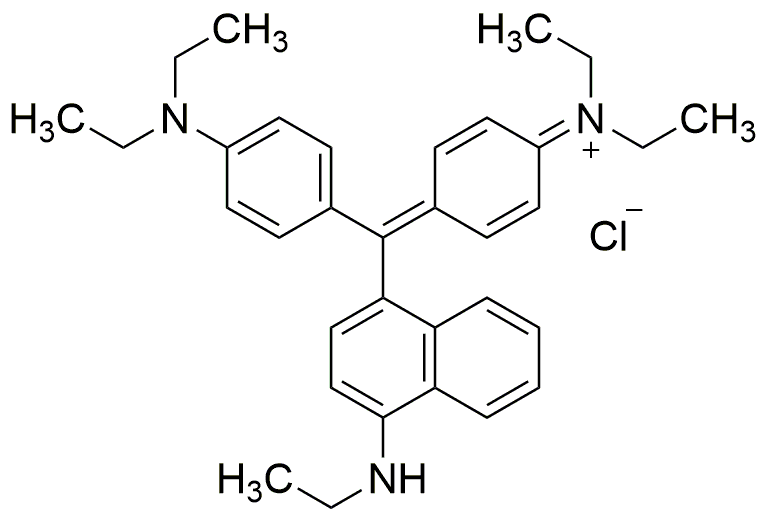Basic blue 7 is widely utilized in research focused on:
- Dyeing Textiles: This chemical is commonly used in the textile industry to produce vibrant blue shades in fabrics, enhancing their aesthetic appeal.
- Biological Staining: In biological research, it serves as a vital stain for microscopy, helping to visualize cellular structures and components, which is crucial for histological studies.
- Paper Industry: Basic blue 7 is applied in the paper industry to impart color to paper products, improving their visual quality and marketability.
- Cosmetics: It is also used in cosmetic formulations, providing color to products like hair dyes and makeup, while ensuring safety and compliance with regulations.
- Research Applications: In laboratories, it is utilized as a pH indicator and in various chemical assays, aiding researchers in determining the acidity or basicity of solutions.
General Information
Properties
Safety and Regulations
Applications
Basic blue 7 is widely utilized in research focused on:
- Dyeing Textiles: This chemical is commonly used in the textile industry to produce vibrant blue shades in fabrics, enhancing their aesthetic appeal.
- Biological Staining: In biological research, it serves as a vital stain for microscopy, helping to visualize cellular structures and components, which is crucial for histological studies.
- Paper Industry: Basic blue 7 is applied in the paper industry to impart color to paper products, improving their visual quality and marketability.
- Cosmetics: It is also used in cosmetic formulations, providing color to products like hair dyes and makeup, while ensuring safety and compliance with regulations.
- Research Applications: In laboratories, it is utilized as a pH indicator and in various chemical assays, aiding researchers in determining the acidity or basicity of solutions.
Documents
Safety Data Sheets (SDS)
The SDS provides comprehensive safety information on handling, storage, and disposal of the product.
Product Specification (PS)
The PS provides a comprehensive breakdown of the product’s properties, including chemical composition, physical state, purity, and storage requirements. It also details acceptable quality ranges and the product's intended applications.
Certificates of Analysis (COA)
Search for Certificates of Analysis (COA) by entering the products Lot Number. Lot and Batch Numbers can be found on a product’s label following the words ‘Lot’ or ‘Batch’.
*Catalog Number
*Lot Number
Certificates Of Origin (COO)
This COO confirms the country where the product was manufactured, and also details the materials and components used in it and whether it is derived from natural, synthetic, or other specific sources. This certificate may be required for customs, trade, and regulatory compliance.
*Catalog Number
*Lot Number
Safety Data Sheets (SDS)
The SDS provides comprehensive safety information on handling, storage, and disposal of the product.
DownloadProduct Specification (PS)
The PS provides a comprehensive breakdown of the product’s properties, including chemical composition, physical state, purity, and storage requirements. It also details acceptable quality ranges and the product's intended applications.
DownloadCertificates of Analysis (COA)
Search for Certificates of Analysis (COA) by entering the products Lot Number. Lot and Batch Numbers can be found on a product’s label following the words ‘Lot’ or ‘Batch’.
*Catalog Number
*Lot Number
Certificates Of Origin (COO)
This COO confirms the country where the product was manufactured, and also details the materials and components used in it and whether it is derived from natural, synthetic, or other specific sources. This certificate may be required for customs, trade, and regulatory compliance.


